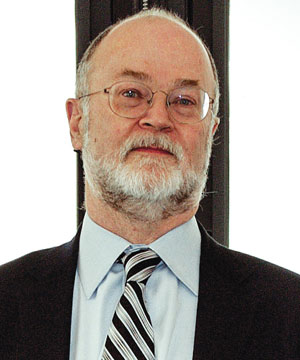The recent news that Australia’s Slater & Gordon, the world’s first publicly listed law firm, was buying the professional services arm of the British insurance claims processor Quindell for the equivalent of $1.16 billion is bound to give Ontario opponents of alternative business structures plenty of grist for the mill.

Just as disconcerting to them, if not more, is the news that Slater & Gordon raised $567 million of the purchase price just three days after issuing some 95.5 million new shares.
Among the assets acquired by Slater & Gordon are 53,000 industrial disease cases.
“So all of a sudden, 53,000 clients are being forced to move from Quindell to Slater & Gordon,” says Patrick Brown of McLeish Orlando LLP, a plaintiffs’ personal injury boutique in Toronto. “If access to justice means being handled in this way, it’s certainly not service-based access to justice.”
Ontario’s personal injury bar has been especially vocal in its opposition to the idea of alternative business structures. Plaintiffs’ lawyers maintain it will lead to the evisceration of the independent firms practising in the area.
“Slater & Gordon is looking at coming to Canada if and when we get ABS here,” said Brown in an earlier interview.
“If they do, there’s no way even a successful [personal injury] firm like ours can compete with an organization that has hundreds of millions in revenue and probably $50 million for advertising.”
Indeed, with the Quindell deal, Slater & Gordon will increase its share of the $4.5-billion personal injury market in Britain to 12 per cent from the seven per cent it had already acquired since it entered the field in 2012.
In less than three years, Slater & Gordon has become the seventh-largest international firm in Britain. Before the Quindell purchase, the firm had bought about one-quarter of Britain’s personal injury practices. They generated some $180 million in revenue for Slater & Gordon in the 2013-14 financial year. Internationally, Slater & Gordon’s personal injury practice generated some 80 per cent of the firm’s $400 million in total revenue.
“Both the plaintiff’s side and the insurance side are rapidly evolving to five or six firms dominating 75 to 80 per cent of the personal injury market,” says Tony Williams of Jomati Consultants LLP, a British-based legal consultancy.
It’s true that the 250 alternative business structures that now exist in Britain represent less than 2.5 per cent of the roughly 10,000 law firms regulated by the Solicitors Regulation Authority. But a report by the authority reveals that they had achieved “a significant share of the overall market” in certain areas of legal work.
More particularly, alternative business structures accounted for a third of the revenue in the personal injury market; captured a significant percentage of the revenue in mental-health matters as well as non-litigation files such as mergers and acquisitions, estates, and consumer and social welfare law; and were otherwise spread relatively evenly across a range of practice types.
But Malcolm Mercer, who heads the Law Society of Upper Canada’s task force on alternative business structures, says it’s not a black-or-white issue. “What we’re really trying to achieve is access to justice, which in itself does not seem to be a contentious goal,” he says. “Within that spectrum, you can have both the fairly uncontentious idea of the Salvation Army providing legal services and the highly controversial idea of consolidating a sector of the legal market.”
As Mercer sees it, the jury is still out on consolidation in the profession.
“There are people who argue that consolidation is a good thing and those who argue that it is not, but my perspective is that we don’t have enough evidence yet to reach a conclusion,” he says. “I think one of the reasonable concerns about consolidation is that once an industry consolidates, it’s very hard to undo the consolidation.”
Still, there’s much for Ontario’s profession to learn from staying abreast of the experience with alternative business structures in Australia and Britain.
“It’s important to think clearly about which of the steps taken in those jurisdictions was reasonable and which were too speculative,” says Mercer. “It may be that what we’ve learned from Australia and England is that Slater & Gordon is a very aggressive consolidator who might do the same thing here and it’s far from clear that that’s a good thing.”
There’s another aspect to the Slater & Gordon transaction, however, that appears to have escaped much notice.
Quindell, the vendor, is itself an alternative business structure. Initially, the business focused on technology for the insurance industry; currently, its legal division is 75 per cent of the business. At one point, Quindell was worth some $3.65 billion and claimed it was the largest listed law firm in the world. But its shares lost about 80 per cent of their value in 2014 and its Canadian joint broker, Canaccord Genuity, ceased working with Quindell after the company became mired in scandal over its complex structure and aggressive accounting practices.
For more, see "
British small solicitors seek little harm from ABS so far."

 Just as disconcerting to them, if not more, is the news that Slater & Gordon raised $567 million of the purchase price just three days after issuing some 95.5 million new shares.
Just as disconcerting to them, if not more, is the news that Slater & Gordon raised $567 million of the purchase price just three days after issuing some 95.5 million new shares.